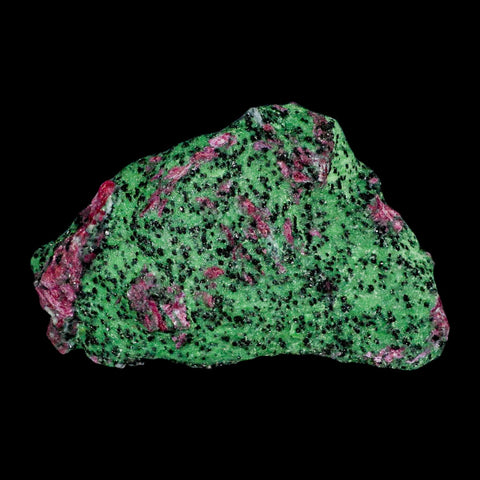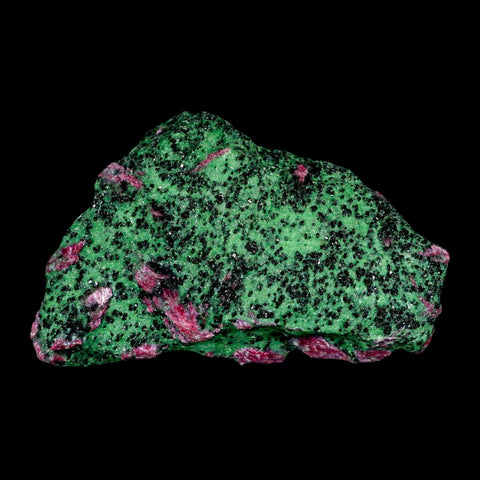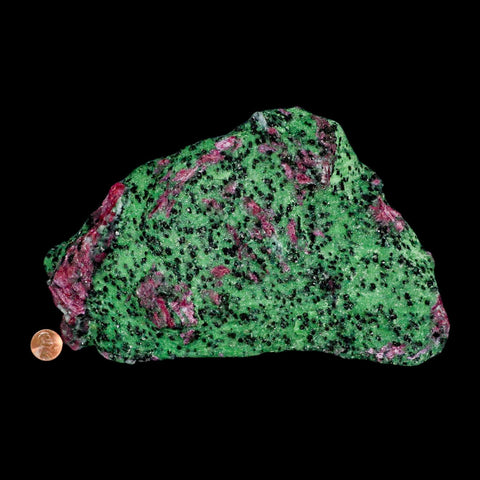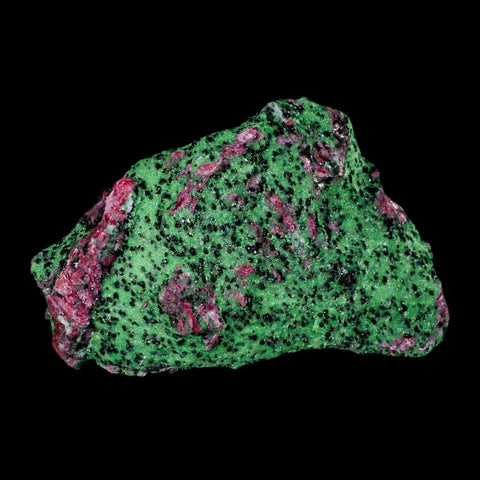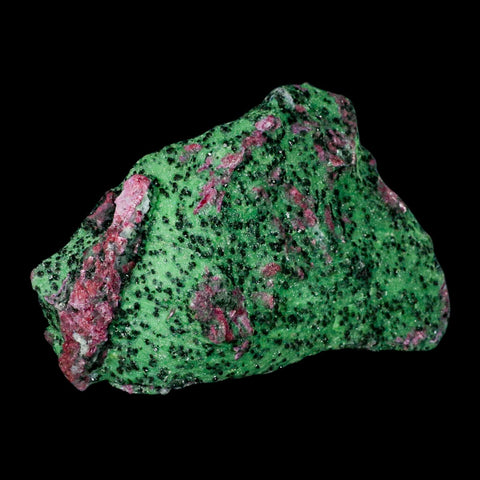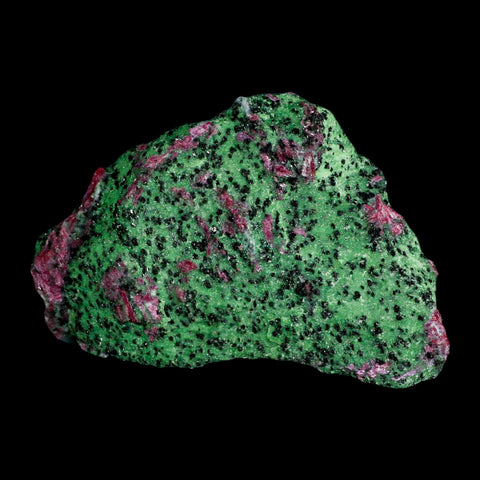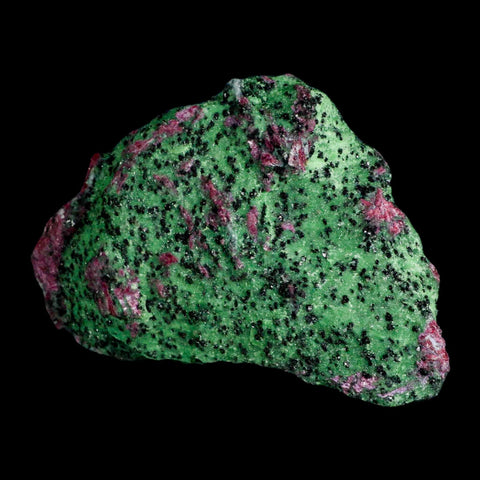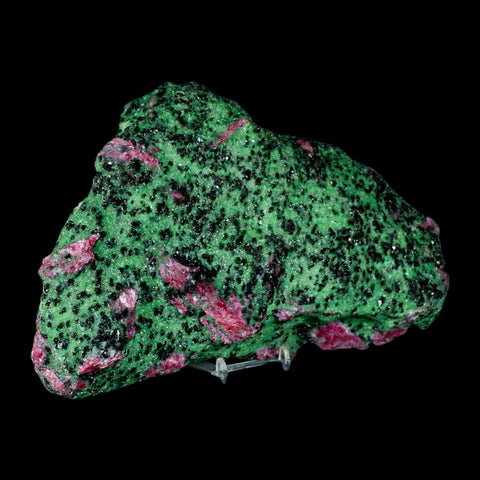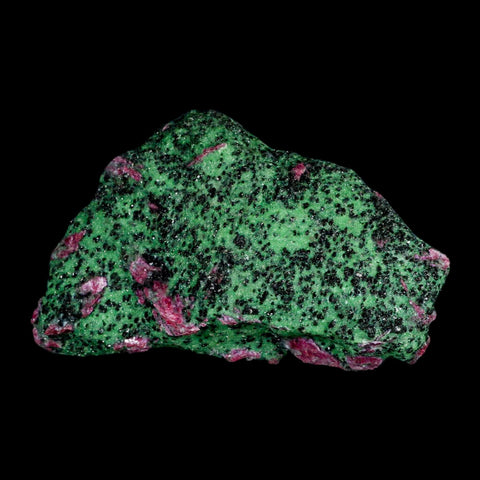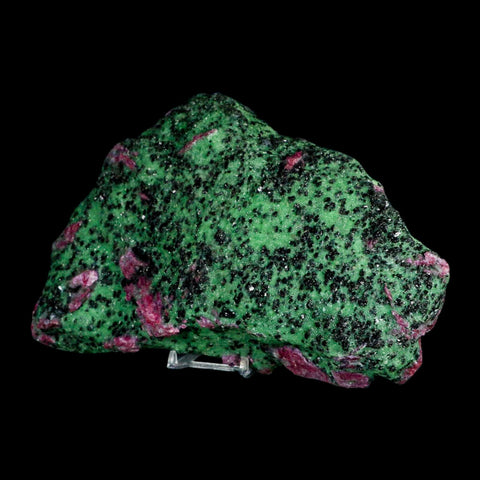9.7" Natural Rough Ruby In Zoisite And Hornblende Crystal Mineral Specimen Anyolite
Location: Mundarara Mine, Longido District, Arusha Region, Tanzania
Weight: 5 Pounds 14 Ounces
Dimensions: 9.7 Inches Long, 5.8 Inches Wide, 2.4 Inches Thick
The item pictured is the one you will receive.
Ruby in Zoisite is a naturally formed mineral aggregate, distinguished by the coexistence of ruby and zoisite, frequently accompanied by black hornblende. This rare blend creates a captivating visual contrast, admired in both ornamental and lapidary use. The term "ruby in zoisite" aptly reflects its defining mineral components, emphasizing the unique fusion that sets it apart.
- Ruby: A red variety of the mineral corundum. Its characteristic red color is due to the presence of chromium impurities within its crystal lattice. In ruby in zoisite, the ruby typically appears as opaque to translucent, often dark red to reddish-brown crystals, sometimes exhibiting hexagonal outlines. These rubies are generally not of gem quality due to their opacity and inclusions, but their color provides a strong contrast to the green zoisite.
- Zoisite: A calcium-aluminum hydroxyl sorosilicate mineral. Zoisite typically occurs in various shades of green, from light to dark, and can also be gray, brown, or pink. In ruby in zoisite, the zoisite component provides the dominant green matrix in which the ruby crystals are embedded. The green color is often attributed to the presence of vanadium or chromium.
- Hornblende (Pargasite): A common amphibole mineral, often appearing as black, opaque crystals or masses within the aggregate. This mineral adds a dark, contrasting element to the green and red, enhancing the overall aesthetic appeal. While not always present in significant amounts, its inclusion is characteristic of many rubies in zoisite specimens.
Ruby in zoisite forms as a result of metamorphic processes. It typically develops in regional metamorphic environments, where pre-existing rocks rich in aluminum and calcium are subjected to intense heat and pressure. These conditions allow both zoisite and corundum (ruby) to crystallize within the same rock. The characteristic red color of the ruby comes from chromium, which is usually sourced from nearby ultramafic rocks or chromium-bearing minerals.


